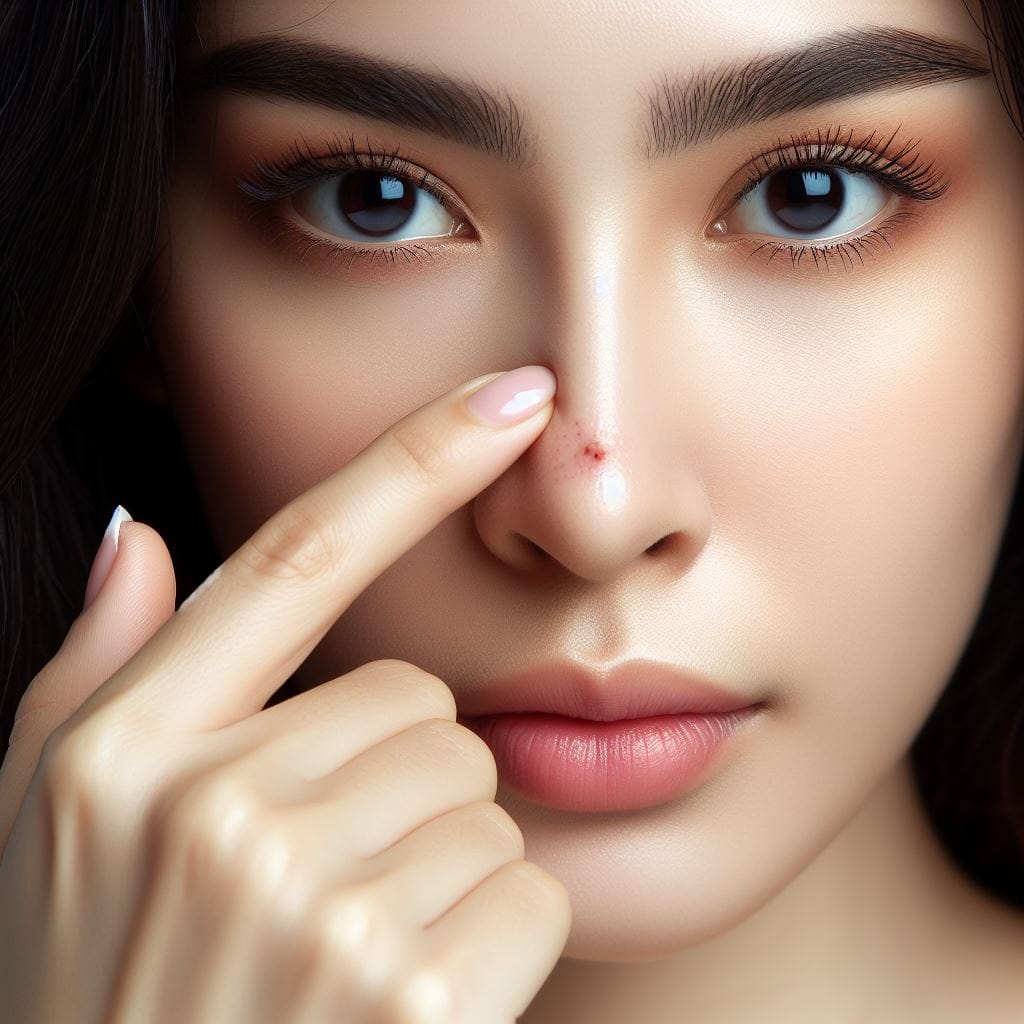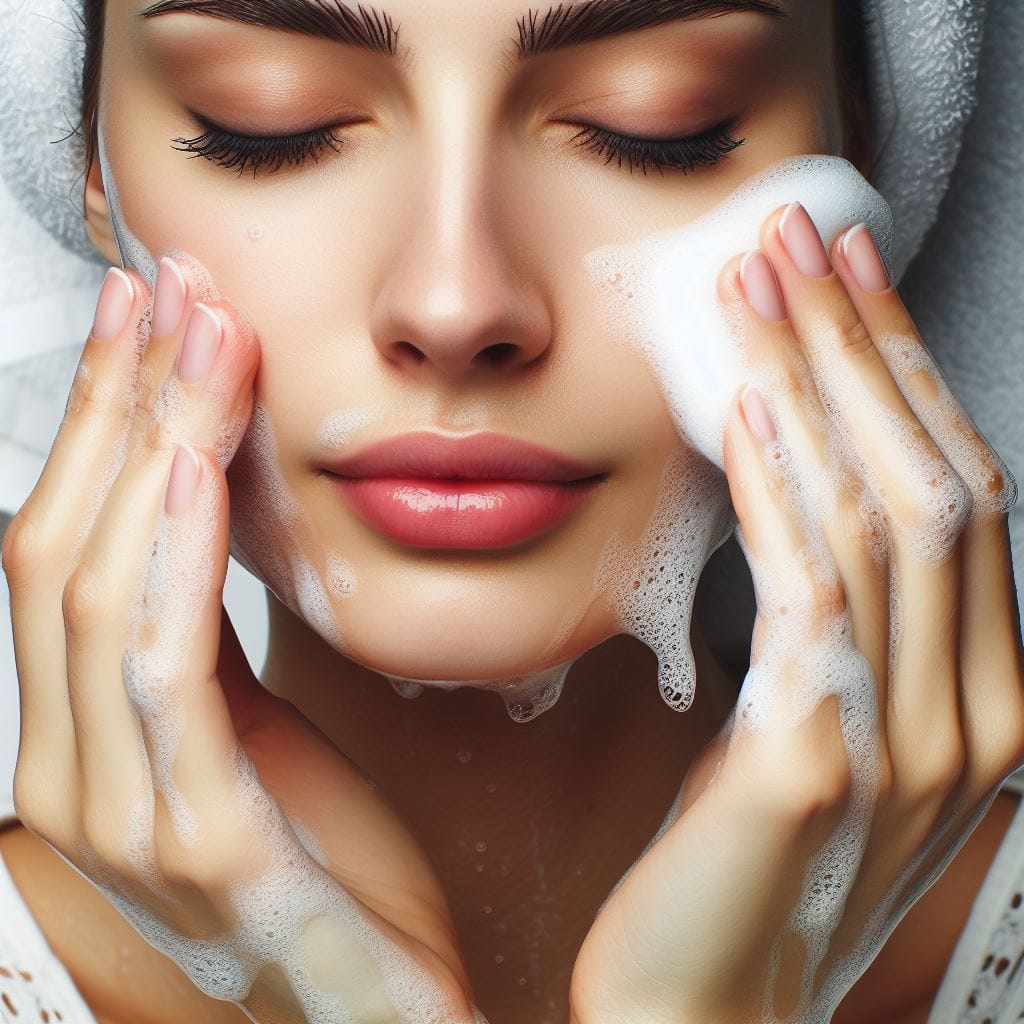Should You Squeeze Blackheads?
It would be best if you never squeezed blackheads yourself, as this can lead to scarring, inflammation, and further damage to your skin. Squeezing blackheads can lead to more harm than good, causing bacteria to spread and increasing the risk of infection, scarring, and prolonged healing times.
When you squeeze, you’re introducing bacteria from your fingers into the pore, which can lead to infection and potential scarring. Additionally, squeezing can push the blockage deeper, creating more blackheads in the surrounding area.
Instead, focus on preventative measures like proper skincare routines and hygiene practices to keep your skin healthy and blackhead-free.
Want to learn how to get rid of blackheads safely and effectively? Let’s explore the alternatives.
Clogged Pores Cause Blackheads
When dead skin cells and excess oil combine in your pores, they can clog them, forming blackheads. This happens when your skin’s natural shedding process slows down, causing dead skin cells to build up. Usually, your skin sheds about 30,000 to 40,000 skin cells per hour, but when this process is disrupted, these cells can mix with excess oil, clogging your pores.
As a result, blackheads form, appearing as small, dark spots on the surface of your skin. You might notice them on your nose, forehead, or chin, where oil glands are most active.
Understanding how blackheads form can help you take preventative measures to keep your skin healthy and clear. By controlling oil production and promoting cell turnover, you can reduce the likelihood of blackheads appearing.

Why Shouldn’t You Squeeze Blackheads?
Squeezing blackheads is not recommended for several reasons:
- Infection risk: Squeezing blackheads can push bacteria and other debris deeper into the skin, leading to inflammation and potentially causing more severe problems like cysts or abscesses.
- Scarring: Squeezing can cause damage to the skin tissue, leading to scarring, pitting, or post-inflammatory hyperpigmentation (PIH).
- Spreading bacteria: When you squeeze a blackhead, you may push bacteria from the affected pore into surrounding pores, causing more breakouts.
- Pushing debris deeper: Squeezing can push the blackhead debris deeper into the pore, making it harder to remove and potentially causing more clogged pores.
- Irritation and inflammation: Squeezing can cause irritation, redness, and inflammation, which can make the skin look worse and feel uncomfortable.
- Damage to skin tissue: Repeatedly squeezing blackheads can cause damage to the skin tissue, leading to a loss of skin elasticity and firmness.
- Ineffective removal: Squeezing is not an effective way to remove blackheads, as it often leaves behind a portion of the clogged pore material, which can lead to further clogs and breakouts.
- Risk of pushing bacteria into the bloodstream: If you squeeze a blackhead with dirty fingers or an unclean environment, you may push bacteria into your bloodstream, leading to more severe health issues.
Patience and gentle skincare practices are vital to managing blackheads and maintaining healthy, glowing skin.
| Risk Factor | Scarring Outcome |
|---|---|
| Prone to keloid scarring | Permanent, raised, and thick scars |
| Inflamed or infected blackheads | Post-inflammatory hyperpigmentation |
| Thicker skin areas (nose, forehead) | More noticeable scars |
| Professional extractions | Minimal risk of scarring |
Alternatives: Safer Ways to Get Rid of Blackheads and FAQs
Now that you’re aware of the risks associated with squeezing blackheads, it’s time to explore safer, more effective ways to address this common skin concern.
Start by washing your face twice daily with a gentle cleanser to remove dirt and oil.
Exfoliate regularly to remove dead skin cells and unclog pores – you can choose between chemical exfoliants like alpha-hydroxy acids or physical exfoliants like gentle scrubs.
Clay masks can also help absorb excess oil and minimize pores.
Consider using retinol products, but consult a dermatologist first, as they can be strong.
For more severe cases, consider professional extraction by a dermatologist or esthetician who can safely remove blackheads using proper tools and techniques.
Should you ever squeeze blackheads?
Generally, the answer is no. Squeezing blackheads can lead to more harm than good, causing bacteria to spread and leading to further irritation and post-inflammatory hyperpigmentation.
It can also enlarge pores, making the skin condition less aesthetic.
However, in rare cases, a whitehead (not a blackhead) might benefit from careful extraction. But don’t try it yourself – consult a professional.
They’ll assess the situation and extract the whitehead safely, if necessary.
Remember, squeezing blackheads isn’t a recommended treatment approach, as it doesn’t address the root cause of blackhead formation.
Instead, focus on preventative measures and proper skincare routines to keep your skin healthy and blackhead-free.

How often should you squeeze blackheads?
You shouldn’t squeeze blackheads at all. Squeezing blackheads can lead to more harm than good, causing bacteria to spread, pores to enlarge, and potentially leading to post-inflammatory hyperpigmentation.
Instead, focus on alternative methods to address the root cause of blackhead formation, such as:
- Using gentle cleansers and exfoliants to unclog pores
- Applying topical treatments containing salicylic acid or benzoyl peroxide
- Maintaining good skincare habits, including regular cleansing and sunscreen use
- Considering professional extractions or blue light therapy for more severe cases
Should you squeeze blackheads on the nose, chin, back, or body?
Squeezing blackheads on specific areas of the body, such as the nose, chin, or back, can spread bacteria, causing further inflammation and potentially resulting in post-inflammatory hyperpigmentation. This can exacerbate acne, making your skin condition worse.
Here’s a breakdown of why squeezing blackheads is not recommended, regardless of location:
| Location | Reason | Concerns |
|---|---|---|
| Nose | Clogged pores, bacteria spread | Enlarged pores, irritation |
| Chin | Oil, dead skin cells, bacteria | Post-inflammatory hyperpigmentation |
| Back | Clogged pores, bacteria spread | Enlarged pores, skin irritation |
| Face | Clogged pores, bacteria spread | Enlarged pores, skin irritation |
| Body | Clogged pores, bacteria spread | Enlarged pores, skin irritation |
Instead, focus on addressing the root cause of blackhead formation through proper skin care and hygiene practices.
What do NHS, UK, US, and dermatologists recommend?
Squeezing blackheads on sensitive skin, as advised by the NHS and other reputable health organizations in the UK and US, requires a cautious approach to avoid exacerbating the underlying skin issues. You should be aware of the risks involved, especially if you have skin conditions like acne, eczema, or rosacea.
| Organization | Recommendation | Rationale |
|---|---|---|
| NHS (UK) | Avoid squeezing | Can push bacteria deeper, causing infection |
| American Academy of Dermatology (US) | Don’t squeeze | Can lead to scarring, inflammation, and prolonged healing |
| British Skin Foundation (UK) | Resist the temptation | Can cause skin damage, worsening of skin conditions |
| Mayo Clinic (US) | Don’t try to pop | Can lead to infection, scarring, and prolonged healing |
Conclusion
While the urge to squeeze blackheads might be strong, resist it! Squeezing can worsen the situation and lead to scarring.
Many alternative methods are safe and effective for tackling blackheads. Start with a gentle skincare routine that includes cleansing and exfoliation. Consider clay masks, retinol (with a dermatologist’s guidance), or even professional extraction for stubborn cases.
By focusing on these alternatives and maintaining healthy skincare habits, you can achieve the clear, beautiful skin you deserve. Remember, patience and consistency are key!
